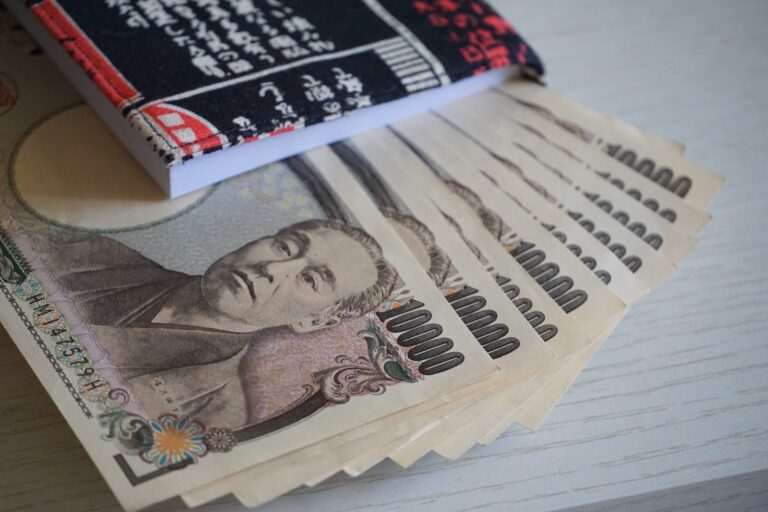Japan is renowned for its stunning landscapes, rich culture, and fascinating history. It’s also a significant player in the global currency market. Japanese companies and markets feature prominently in world economic news, and the Japanese yen (¥) is among the most widely traded currencies globally.
Whether you’re planning a visit or sending money to Japan, understanding its currency is an excellent starting point. Beyond exchange rates and the logistics of transferring money abroad, it’s worth exploring the history of the yen and how it’s used today. Here, we’ll cover the essentials plus five fascinating facts about Japanese currency.
Japanese Currency Basics
The official currency of Japan is the yen, abbreviated as JPY. Its symbol, ¥, is placed before numeric values, such as ¥100, and is the same symbol used for the Chinese yuan. In Japanese writing, the character for yen is 円. The yen is issued by the Bank of Japan (BOJ), the country’s central bank, which is based in Tokyo. The BOJ is responsible for setting Japan’s monetary policy. Japanese currency comes in two forms: coins and banknotes. The most common denominations are:
Banknotes
- ¥1,000
- ¥5,000
- ¥10,000
Other denominations, like ¥2,000 banknotes, exist but are rarely used.
Coins
- ¥1
- ¥5
- ¥10
- ¥50
- ¥100
- ¥500
Unlike English, Japanese doesn’t use a plural form for “yen,” so it’s always referred to as “yen” regardless of the amount. While the sen and rin—subunits of the yen—were historically in use, they are no longer part of modern currency circulation.
5 Fascinating Facts About the Japanese Yen
The yen holds deep cultural and historical significance, transcending its role in the economy. Here are five key insights into its history and global importance:
1. The Yen Is a Relatively New Currency
Japan’s rich history spans thousands of years, but the yen was only introduced in 1871 through the New Currency Act. This marked the end of the Tokugawa shogunate’s rule and the start of the Meiji Restoration, a period of sweeping reforms. The yen replaced a complex system of copper coins known as “mon.” Initially pegged to the gold standard, the yen was stabilised to prevent depreciation, a practice that lasted until 1931. Following World War II, the yen was pegged to the US dollar at a fixed rate of ¥360 to $1, a system that remained until 1971.
2. Historical Figures Feature on Japanese Banknotes
Each yen banknote celebrates an influential historical figure, including:
- Hideyo Noguchi (¥1,000): Renowned bacteriologist.
- Ichiyo Higuchi (¥5,000): Acclaimed poet and novelist.
- Yukichi Fukuzawa (¥10,000): Influential educator and publisher.
3. The Yen Is the World’s Third-Most Traded Currency
After the US dollar and the euro, the yen is the third-most traded currency globally and the most traded in Asia. Its popularity stems from Japan’s manufacturing strength and high-value exports, making it a favoured safe-haven currency for global investors.
4. “Yen” Simply Means “Round Object”
The term “yen” translates to “round object” in English, referencing the shape of coins. In daily life, Japanese people often refer to their currency as “okane,” which means money.
5. Japanese Currency Is Highly Secure
The yen is considered one of the most counterfeit-resistant currencies, thanks to advanced security features such as:
- Watermarks
- Microprinting
- Holograms
- Luminescent ink
These measures ensure that yen banknotes and coins are extremely difficult to replicate.
Exchanging and Using Japanese Yen
If you’re moving to Japan or visiting, cash remains a widely used form of payment, especially in smaller towns and for low-cost purchases. While credit cards like Visa, Mastercard, and American Express are increasingly accepted in cities like Tokyo and Osaka, many smaller merchants still prefer cash.
Accessing Cash
To obtain yen, you can exchange your money at airports, banks, or post offices. For more competitive rates, consider using ATMs. However, not all Japanese ATMs accept foreign cards. For reliable access, try postal ATMs or 7-Bank ATMs found in 7-11 convenience stores.
Understanding Exchange Rates
Exchange rates fluctuate due to various factors, including global trade dynamics, interest rates, and political developments. Although the yen is a strong and stable currency, its value can vary relative to other currencies due to inflation and market forces.
For UK travellers, it’s easy to check the current GBP-to-JPY exchange rate using online currency converters or through your bank or money transfer provider.
Sending Money to Japan
Transferring money to Japan from the UK has become easier with the rise of digital services. International money transfer platforms like Remitly offer competitive rates and low fees compared to traditional bank transfers. Before transferring, always compare exchange rates and fees to get the best deal. Many services allow you to lock in a favourable rate for added peace of mind.
Japan’s currency, the yen, is more than just a medium of exchange—it’s a symbol of the country’s fascinating history and global economic influence. Whether you’re planning a visit or sending money to loved ones, understanding the yen ensures you’ll make informed financial decisions while enjoying all that Japan has to offer.
